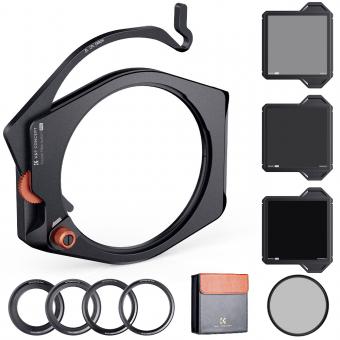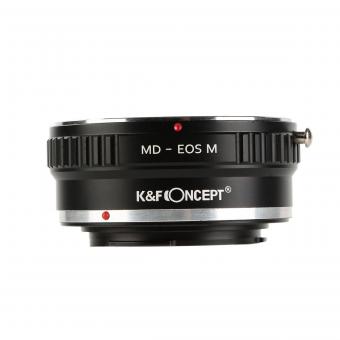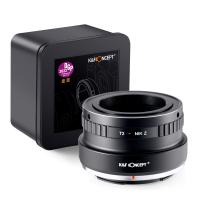How Are Microscopes Used In Medicine ?
Microscopes are extensively used in medicine for various purposes. They enable healthcare professionals to visualize and study microscopic structures, such as cells, tissues, and microorganisms, which are crucial for diagnosis, treatment, and research. In clinical settings, microscopes are used in pathology to examine tissue samples for the presence of abnormalities or diseases. They are also employed in hematology to analyze blood cells and identify blood disorders. Microscopes play a vital role in microbiology by allowing the identification and study of bacteria, viruses, and other microorganisms responsible for infections. Additionally, they are used in medical research to investigate the mechanisms of diseases and develop new treatments. Overall, microscopes are indispensable tools in medicine, providing valuable insights into the microscopic world and aiding in the understanding and management of various health conditions.
1、 Diagnostic tool for examining cells and tissues in detail.
Microscopes are an essential tool in medicine, particularly in the field of pathology, where they are used for diagnostic purposes to examine cells and tissues in detail. By magnifying the samples, microscopes allow healthcare professionals to observe and analyze the structure and characteristics of cells, helping to identify diseases and determine appropriate treatment plans.
One of the primary uses of microscopes in medicine is in the examination of biopsy samples. When a patient undergoes a biopsy, a small piece of tissue or cells is removed for analysis. These samples are then prepared and placed under a microscope for examination by a pathologist. By observing the cells and tissues at a microscopic level, pathologists can identify abnormalities, such as cancerous cells or signs of infection, which can aid in making an accurate diagnosis.
Microscopes are also used in other areas of medicine, such as hematology, where they are used to examine blood samples. By analyzing the shape, size, and characteristics of blood cells, healthcare professionals can diagnose various blood disorders, such as anemia or leukemia.
In recent years, advancements in microscopy technology have further enhanced its applications in medicine. For example, confocal microscopy allows for the visualization of cells and tissues in three dimensions, providing a more detailed and accurate assessment. Additionally, techniques such as fluorescence microscopy enable the labeling of specific molecules or structures within cells, aiding in the identification of disease markers or the tracking of cellular processes.
Overall, microscopes play a crucial role in medicine by providing healthcare professionals with a detailed view of cells and tissues. This enables accurate diagnosis, monitoring of disease progression, and the development of targeted treatment plans. As technology continues to advance, microscopes are likely to become even more powerful and versatile tools in the field of medicine.
2、 Aid in identifying and studying disease-causing microorganisms.
Microscopes play a crucial role in the field of medicine by aiding in the identification and study of disease-causing microorganisms. They enable healthcare professionals to visualize and analyze microscopic structures, cells, and pathogens that are otherwise invisible to the naked eye. This ability to observe and understand the intricacies of microorganisms is essential for accurate diagnosis, treatment, and prevention of diseases.
One of the primary uses of microscopes in medicine is the identification of pathogens. By examining samples such as blood, tissue, or bodily fluids under a microscope, doctors and laboratory technicians can identify the presence of bacteria, viruses, fungi, and parasites. This information is vital for determining the appropriate course of treatment and prescribing the right medications.
Microscopes also aid in studying the morphology and behavior of microorganisms. By observing their size, shape, and movement, scientists can gain insights into their life cycles, reproduction methods, and pathogenicity. This knowledge is crucial for developing effective vaccines, antibiotics, and antiviral drugs.
In recent years, advancements in microscopy techniques have further enhanced their utility in medicine. For example, fluorescence microscopy allows for the visualization of specific molecules or structures within cells, enabling researchers to study cellular processes and identify disease markers. Additionally, electron microscopy provides high-resolution images, allowing for detailed examination of cellular structures and the identification of ultra-small pathogens.
Furthermore, the development of digital microscopy has revolutionized medical research and education. Digital microscopes can capture high-quality images and videos, which can be easily shared, stored, and analyzed. This technology enables remote collaboration, facilitates telemedicine, and enhances medical education by providing access to a vast library of digital slides for teaching and reference purposes.
In conclusion, microscopes are indispensable tools in medicine, aiding in the identification and study of disease-causing microorganisms. With ongoing advancements in microscopy techniques, these instruments continue to play a vital role in improving diagnostics, treatment, and our overall understanding of diseases.
3、 Facilitate analysis of blood samples for disease detection.
Microscopes play a crucial role in medicine by facilitating the analysis of blood samples for disease detection. Blood samples are routinely collected from patients for diagnostic purposes, and microscopes are used to examine these samples at a cellular and molecular level. This allows healthcare professionals to identify and understand various diseases, leading to accurate diagnoses and appropriate treatment plans.
One of the primary uses of microscopes in medicine is the examination of blood smears. By placing a drop of blood on a glass slide, spreading it thinly, and staining it, healthcare professionals can observe the morphology and characteristics of different blood cells. This enables the identification of abnormalities such as infections, anemia, leukemia, and other blood disorders. Microscopes also aid in the detection of parasites, such as malaria, by allowing the visualization of the parasite within the red blood cells.
In addition to blood smears, microscopes are used for other blood tests, such as the examination of bone marrow samples. Bone marrow contains stem cells that give rise to various blood cells, and microscopic analysis of these samples can provide valuable information about the production and maturation of blood cells. This is particularly important in diagnosing and monitoring conditions like leukemia and lymphoma.
Furthermore, microscopes are used in the field of histopathology, where tissue samples are examined to diagnose diseases such as cancer. Microscopic examination of tissue sections allows pathologists to identify abnormal cell growth, determine the stage and grade of tumors, and guide treatment decisions. This is done through techniques like immunohistochemistry, where specific proteins are labeled and visualized under the microscope to identify the type of cells present.
The latest advancements in microscopy technology have further enhanced its role in medicine. For instance, digital microscopy allows for the capture and storage of high-resolution images, enabling remote consultation and collaboration among healthcare professionals. Additionally, techniques like fluorescence microscopy and confocal microscopy provide detailed visualization of specific molecules and structures within cells, aiding in the understanding of disease mechanisms and the development of targeted therapies.
In conclusion, microscopes are indispensable tools in medicine, particularly in the analysis of blood samples for disease detection. They enable healthcare professionals to observe and identify abnormalities at a cellular and molecular level, leading to accurate diagnoses and appropriate treatment plans. With ongoing advancements in microscopy technology, the role of microscopes in medicine is likely to continue expanding, further improving patient care and outcomes.
4、 Assist in surgical procedures by providing magnified views.
Microscopes play a crucial role in medicine by providing magnified views of biological samples, tissues, and cells. They are extensively used in various medical fields, including pathology, histology, microbiology, and surgery. One of the significant applications of microscopes in medicine is their use in surgical procedures.
Microscopes, particularly surgical microscopes, are used to assist surgeons during intricate and delicate surgeries. These microscopes provide high-resolution, magnified views of the surgical site, enabling surgeons to perform precise and accurate procedures. By enhancing visualization, microscopes help surgeons identify and navigate through small structures, such as blood vessels and nerves, reducing the risk of damage and improving patient outcomes.
In recent years, there have been advancements in surgical microscope technology, leading to improved surgical techniques. For instance, the integration of fluorescence imaging with surgical microscopes allows surgeons to visualize specific structures or tissues that have been labeled with fluorescent dyes. This technique is particularly useful in identifying tumor margins during cancer surgeries, as it helps ensure complete tumor removal while preserving healthy tissue.
Moreover, microscopes equipped with advanced imaging techniques, such as confocal microscopy and optical coherence tomography (OCT), have been introduced in medicine. These imaging modalities provide real-time, high-resolution images of tissues at the cellular level, aiding in the diagnosis and monitoring of various diseases. For example, OCT can be used to visualize retinal structures in ophthalmology, helping detect and manage conditions like macular degeneration and diabetic retinopathy.
In conclusion, microscopes are indispensable tools in medicine, and their use in surgical procedures has revolutionized the field. By providing magnified views and enhancing visualization, microscopes assist surgeons in performing precise and accurate surgeries. With the integration of advanced imaging techniques, microscopes continue to evolve, enabling improved diagnosis, treatment, and patient care.



































